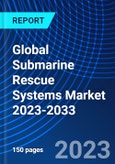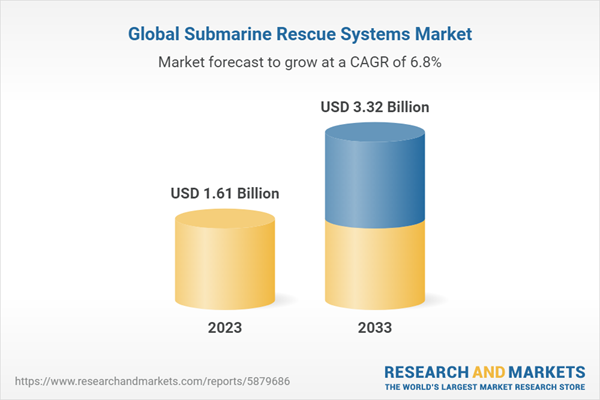Submarine Rescue Systems represent the cutting edge of subsea engineering, offering crucial lifelines to submariners in emergency situations. These systems encompass various components, such as Submariner Free Accent Recovery, DISSUB Ventilation and Recompression, Transfer Under Pressure Decompression Arrays (TUP), subsea Remotely Operated Vehicles (ROV), free swimming Submarine Rescue Vehicles (SRV), and Atmospheric Diving equipment. They play a critical role in ensuring the safety of submarine operations.Submarine Rescue Systems Are Vital Assets for Safeguarding Submariners' Lives and Ensuring the Operational Readiness of Submarine Forces
The submarine is equipped with escape infrastructures that enable either Free Accent or Transfer Under Pressure (TUP) for rescuing submariners. TUP Systems work in conjunction with Submarine Rescue Vehicles (SRV) to safely transfer DISSUB occupants to a ship-based decompression complex.
When a distressed submarine (DISSUB) requires an immediate response to its distress, it must detect, communicate, and maintain life on board until the TUP Rescue Vessel can be mobilized and arrive at the scene. In such cases, a Vessel of Opportunity (VOO) equipped with an installed ROV with Emergency Life Support Stores (ELSS), an Atmospheric Diving Suit (ADS), or an equivalent Diving System, and a Submarine Emergency Ventilation and Decompression System (SEVDS) is employed.
The Submarine Emergency Ventilation and Decompression System (SEVDS) is a surface-supplied, umbilical-linked system designed to sustain a distressed submarine (DISSUB). It continuously monitors and controls the atmospheric conditions within the DISSUB by analyzing its contents and determining the necessary atmosphere control methods. These include exhausting the contents, supplying breathing air from the surface to stabilize oxygen and carbon dioxide levels, flushing contaminated atmospheres, managing internal pressure, and maintaining a safer environment. The SEVDS can be rapidly installed to the DISSUB's location and connected to the submarine using ROV and ADS technology.
Deep Submergence Rescue Vehicles (DSRVs) are specialized submarines designed to rescue submarine crews. Equipped with manipulator arms to attach to a submarine, DSRVs also have life support systems that can sustain a crew for extended periods.
Remotely Operated Vehicles (ROVs) are uncrewed vehicles controlled by operators on the surface. ROVs are deployed to survey the area around a submarine and can deliver supplies or conduct rescue operations.
Transfer Under Pressure (TUP) systems are essential for decompressing submarine crews after rescue. TUP systems consist of large chambers pressurized to match the submarine's pressure level. Rescued crew members are transferred to the TUP system and slowly decompressed.
The growth of the Submarine Rescue Market is influenced by increasing defense spending, technological advancements in submarine rescue, and the rise of regional conflicts. Key players in the market are continuously developing innovative submarine rescue vessels to meet military requirements, including larger and more capable DSRVs and ROVs with enhanced capabilities. Automation is becoming more prevalent in submarine rescue operations to reduce the risk of human error.
Advanced sonar systems are being developed to locate distressed submarines, while robotic systems aim to conduct rescue operations without human intervention. These technologies have the potential to revolutionize submarine rescue, but they are still in the development phase.
In a recent development, JFD, part of James Fisher and Sons plc, conducted a successful Flying Fish exercise in collaboration with the US Air Force, testing the loading and delivery of NATO Submarine Rescue System (NSRS) equipment using the C5 Super Galaxy aircraft. Ensuring air mobility options for submarine intervention and rescue operations is crucial in an uncertain future, as delays in rescue missions could have disastrous consequences. The exercise expanded the choices for NSRS air movement and provided beneficial alternatives to the AN124 fleet, whose availability was affected by the conflict in Ukraine.
In conclusion, Submarine Rescue Systems are indispensable in ensuring the safety and protection of submariners during emergencies. Ongoing technological advancements and innovative approaches will continue to shape the future of submarine rescue, enhancing the effectiveness and efficiency of these critical systems.
Table of Contents
Submarine Rescue Market Report DefinitionExpert Opinions on Submarine Rescue Market ReportConclusions
Submarine Rescue Market Segmentation
Submarine Rescue Market Analysis for next 10 Years
Market Technologies of Submarine Rescue Market
Global Submarine Rescue Market Forecast
Regional Submarine Rescue Market Trends & Forecast
Country Analysis of Submarine Rescue Market
Opportunity Matrix for Submarine Rescue Market
Table Information
| Report Attribute | Details |
|---|---|
| No. of Pages | 150 |
| Published | September 2023 |
| Forecast Period | 2023 - 2033 |
| Estimated Market Value ( USD | $ 1.61 Billion |
| Forecasted Market Value ( USD | $ 3.32 Billion |
| Compound Annual Growth Rate | 6.8% |
| Regions Covered | Global |









